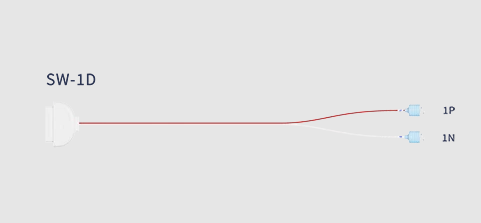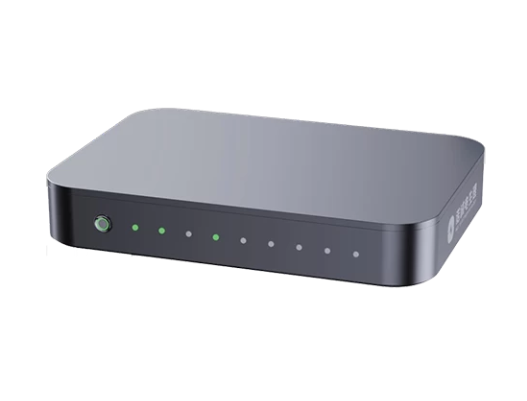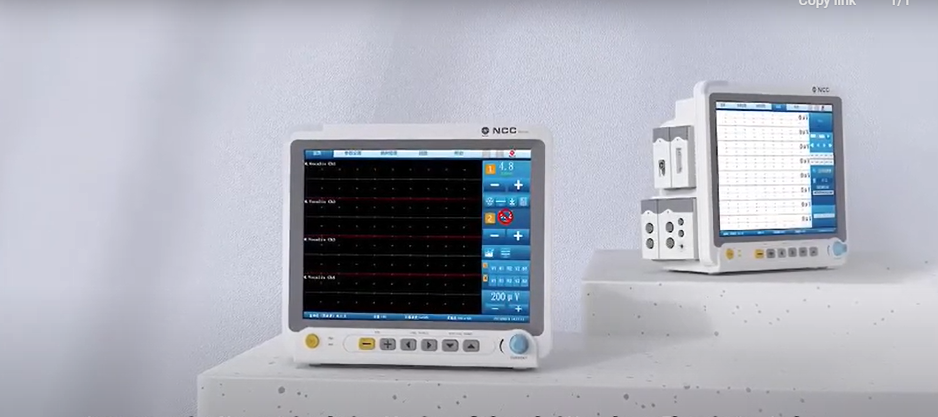Why IONM Systems Are Essential for Real-Time Monitoring in Neurosurgical Procedures
Neurosurgery is one of the most delicate and high-stakes areas of medical practice. Surgeons perform intricate procedures on the brain, spine, and peripheral nerves, where even the smallest mistake can result in significant neurological impairment. This is why Intraoperative Neurophysiological Monitoring (IONM) systems have become indispensable tools in modern neurosurgery, ensuring real-time monitoring of the nervous system's function throughout the surgical procedure.
IONM systems provide continuous feedback on neural activity, alerting surgeons to potential risks and allowing immediate corrective action to be taken. As neurosurgical procedures become increasingly complex and minimally invasive, the need for real-time monitoring is more important than ever. Companies like NCC, a leading provider of electrophysiological equipment, consumables, and solutions, play a crucial role in advancing the capabilities of IONM systems. In this article, we’ll explore the essential role of IONM in neurosurgery and why it’s a critical tool for patient safety and surgical success.
What is IONM and How Does It Work?
Intraoperative Neurophysiological Monitoring (IONM) refers to the use of specialized equipment to continuously monitor the functional status of the brain, spinal cord, and nerves during surgery. IONM systems detect electrical activity generated by neural structures and relay this information to the surgical team in real-time. By monitoring these signals, surgeons can identify potential problems—such as nerve compression or damage—before they lead to permanent injury.
IONM works by employing various techniques, including somatosensory evoked potentials (SSEP), motor evoked potentials (MEP), and electromyography (EMG), to assess the integrity of the neural pathways. These techniques help surgeons monitor sensory and motor functions, ensuring that vital neural structures are not inadvertently damaged during surgery.
Incorporating IONM into neurosurgical procedures allows for real-time feedback on the functional status of neural pathways, which is essential for minimizing the risk of postoperative neurological deficits.

Why IONM Systems Are Crucial for Neurosurgery
1. Preventing Neurological Damage
The primary benefit of IONM systems in neurosurgery is their ability to detect nerve damage or dysfunction in real time, giving surgeons a chance to take immediate action before permanent injury occurs. Neurosurgical procedures—whether involving the brain, spine, or peripheral nerves—are highly complex and carry a risk of damaging critical neural structures.
By using IONM to continuously monitor nerve function, surgeons can be alerted if they are inadvertently compromising the neural pathways. For instance, in spinal surgeries, IONM can detect early signs of spinal cord compression, which could lead to paralysis or loss of motor function if not addressed promptly. With the real-time information provided by IONM, surgeons can adjust their techniques or reposition instruments, significantly improving the chances of preserving nerve function and preventing irreversible damage.
2. Enhanced Surgical Precision
Minimally invasive and complex neurosurgical procedures often take place in confined, difficult-to-reach areas of the body, where visual cues are limited. In such settings, surgical precision is critical, and traditional methods of monitoring are not always sufficient. IONM provides vital information about the status of neural structures during the surgery, giving surgeons a clearer understanding of the environment they are operating in.
For example, during spinal surgery, IONM can help the surgical team identify the exact location of the spinal cord, nerves, and other sensitive structures. This information allows the surgeon to make more informed decisions about where to place screws or make incisions, improving accuracy and minimizing the risk of inadvertent damage to the spinal cord or nearby nerves.
The ability to monitor neural pathways in real-time ensures that the surgical team can carry out procedures with a higher degree of precision, even when the surgical field is small or difficult to visualize.
3. Faster Response Time to Complications
One of the greatest advantages of IONM systems is the real-time feedback they provide during surgery. In cases where a neural structure is at risk, IONM can detect abnormal signals—such as a loss of motor response or diminished sensory activity—immediately. This allows the surgical team to take rapid corrective action before the damage becomes irreversible.
For instance, if the motor evoked potential (MEP) response starts to degrade, indicating potential damage to the motor pathway, the surgeon can alter their approach, reduce pressure on a specific area, or stop the procedure altogether if necessary. This ability to intervene early significantly reduces the risk of severe complications and improves the overall outcome of the surgery.
In situations where time is critical, such as in brain surgery or complex spinal procedures, real-time alerts provided by IONM can make the difference between preserving function and causing permanent damage.
4. Improving Postoperative Outcomes
The ultimate goal of neurosurgery is to ensure that patients experience the best possible postoperative outcomes. By reducing the risk of nerve injury during surgery, IONM contributes to faster recovery times, reduced pain, and fewer complications after the procedure. Preserving nerve function is crucial for ensuring that patients regain motor function, sensation, and overall quality of life after surgery.
For example, in spinal surgeries, protecting the spinal cord and nerve roots during procedures like decompression or fusion is critical for preventing long-term disabilities. IONM ensures that the spinal cord remains intact, reducing the likelihood of postoperative complications such as paralysis, numbness, or loss of bowel and bladder control.
Because IONM systems provide continuous monitoring throughout the procedure, surgeons can ensure that their actions do not lead to inadvertent damage, resulting in better long-term outcomes for patients.
5. Cost-Effectiveness and Reduced Surgical Risk
Although IONM technology adds an additional layer of cost to a surgical procedure, it has been shown to be cost-effective in the long run. By reducing the likelihood of complications and the need for revision surgeries, IONM can save healthcare systems significant amounts of money. Early detection of nerve damage prevents long-term neurological impairments, reducing the need for rehabilitation, additional medical treatments, or lengthy hospital stays.
Furthermore, with the increased focus on patient safety and outcomes, healthcare providers are more likely to embrace technologies that can improve surgical precision and reduce the risk of errors. The cost-benefit ratio of IONM is favorable, as it ensures better outcomes while preventing costly complications and unnecessary follow-up procedures.
NCC: Leading the Charge in Electrophysiological Solutions
As a one-stop provider of neurophysiological equipment, consumables, and solutions, NCC has become one of China’s leading suppliers in the field of electrophysiology. Their innovative products, developed through continuous research and development, play a significant role in advancing IONM technology for neurosurgical procedures.
NCC’s commitment to innovation in the field of electrophysiological and rehabilitation technologies has enabled them to provide comprehensive, reliable, and accurate monitoring solutions. By leveraging cutting-edge technology and expert knowledge, NCC helps surgeons perform safer, more effective procedures, ensuring better outcomes for patients. Their IONM solutions offer real-time monitoring, easy integration into operating room workflows, and enhanced safety features that support the surgical team in making data-driven decisions throughout the procedure.
As a trusted leader in electrophysiology, NCC continues to support the global medical community by developing solutions that enhance patient safety and improve the quality of care in neurosurgery.
Conclusion: The Essential Role of IONM in Neurosurgery
Intraoperative Neurophysiological Monitoring (IONM) has become an essential tool for ensuring patient safety and surgical precision in neurosurgical procedures. By providing continuous, real-time feedback on the functional integrity of neural structures, IONM allows surgeons to detect potential damage early and take corrective action immediately. This technology plays a critical role in minimizing the risk of neurological injury, improving postoperative outcomes, and enhancing overall surgical success.
As surgical techniques become more advanced and minimally invasive, the demand for IONM will continue to grow. Companies like NCC, with their dedication to innovation and quality, are helping to shape the future of neurosurgery, providing cutting-edge solutions that improve the safety, efficiency, and outcomes of procedures for patients worldwide.

 中文
中文 Arabic
Arabic Spanish
Spanish Hindi
Hindi French
French Indonesian
Indonesian Portuguese
Portuguese Persian
Persian Russian
Russian Korean
Korean German
German Vietnamese
Vietnamese Turkish
Turkish



